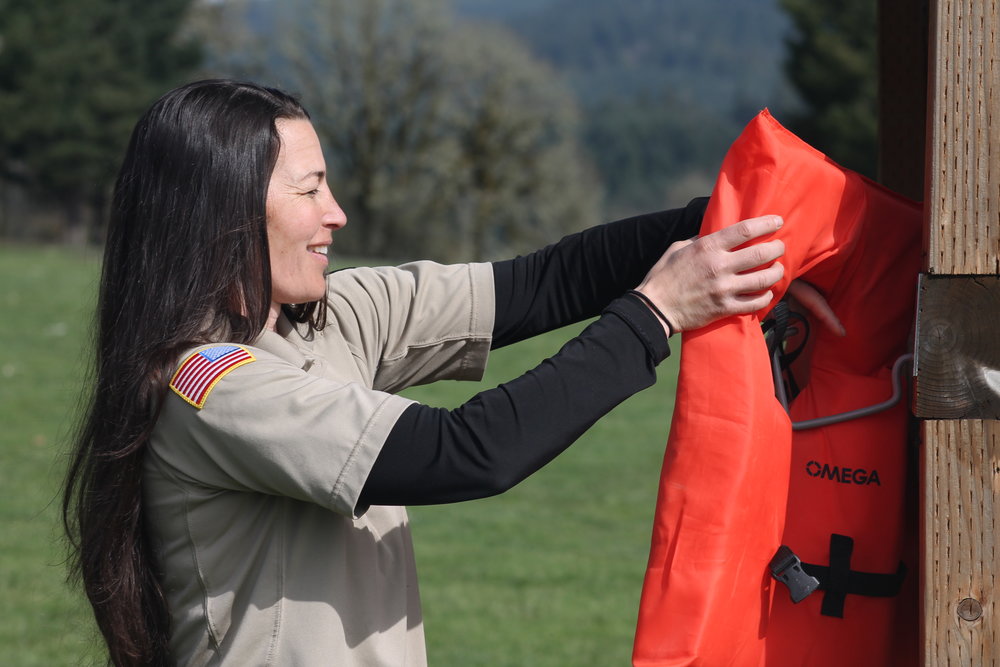Translate this page: select your language using the handy translation tool located in the footer (scroll to the bottom of the page)!
Like many public parks in rural areas all over the country, Henry Hagg Lake is a working reservoir with numerous opportunities for recreation, as well as inherent dangers common to these settings. Swimming in a reservoir is different from swimming in a pool. More skills and energy are required for natural water environments; therefore, visitors who plan to be in the water are urged to understand the risks involved, practice water safety, and know how to respond in the event of a water emergency.
Become trained to respond to aquatic and other emergencies by taking Red Cross first aid, CPR and water safety courses.
Know the swimming abilities of those in your group.
Plan ahead for appropriate supervision and access to life jackets/personal flotation devices (PFDs.)
PFDs may be borrowed from one of our 15 loaner station kiosks at 7 locations around the lake. Refer to our park map legend for specific locations. PFDs are available for day use and must be returned to the kiosks before the park closes for the night.
Be aware of possible hazards. Things to watch out for in a natural body of water are sudden drop-offs, rocks and plants under the water, boats and fishing lines, and even other swimmers.
Hagg Lake is fed by snow melt and water temperatures are cold most of the year. This can be particularly dangerous on hot days, when the difference between the outside and water temperature are drastic. Reduce shock on the body by wearing a life jacket and appropriate gear.
Have a plan for when and where to find help in an emergency. Check to see if you have cell coverage ahead of time in case you need to dial 9-1-1. AT&T provides coverage throughout most areas of the park, and two emergency phones are located at the main restroom facilities at C-Ramp and Eagle Point.
Identify your recreation spot on the park map for future reference, just in case you need to describe your location to emergency responders.
Set safety guidelines for the whole family and review prior to arriving at the lake.
Keep children under constant supervision and avoid distractions. Make sure that inexperienced swimmers stay within arm's reach.
Only use a U.S. Coast Guard-approved PFD to keep children safe. Adults must ensure that children wear properly sized PFDs, regardless of swimming ability.
Do not rely upon water wings or inflatable toys; they can enable swimmers to go beyond their ability or suddenly deflate and lead to a drowning situation.
Swim with a buddy.
Always enter unknown or shallow water cautiously, feet first.
Do not enter water from a height, such as a tree, ledge or bridge.
Do not use alcohol or other drugs before or while swimming or supervising swimmers.
Follow the safety messages on all warning signs posted at the lake.
Cold water is dangerous, particularly on hot days. The temperate difference can lead to shock. To minimize risks:
Go in slow, allowing your body to acclimate.
Recognize signs of shock and hypothermia.
Wear a life jacket.
Wear appropriate gear (wetsuit).
Review safety guidelines with everyone in your group. Talk about how you will handle various possible emergencies.
Consider professional swim lessons for the whole family. These are offered frequently through various parks and recreation departments and districts in Washington County
Cyanobacteria
For more information regarding swimming safety, please consult the following resources.
Hagg Lake/Scoggins Valley Park are owned by the U.S. Bureau of Reclamation and maintained for public use by Washington County Parks since the mid 1970's. We are committed to providing a safe and fun experience for all visitors but remind those who choose to swim in the lake, or take part in any type of water activities, that they do so at their own risk.
